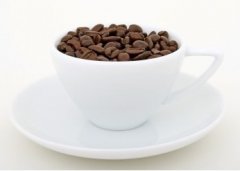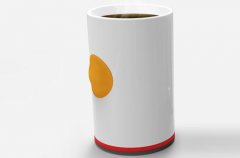Coffee machine introduction of boutique coffee basic knowledge coffee machine

Brief introduction of coffee machine
Coffee is one of the most popular drinks in the world. It brings pleasure and excitement to people. With the reform and opening up of our country, the most popular Italian espresso (Espresso), cappuccino (Cappuccino) and Latte milk coffee in the world have also been put on the table of the Chinese people, and are loved by more and more people. Make a perfect Italian Espresso.
The coffee machine or Cappuccino coffee needs to be done with the help of a special coffee machine. The coffee machine uses about 10 atmospheric pressure to force about 90 ℃ of hot water to pass through 10 grams of fine extruded coffee powder, absorb coffee fat and other aromatic substances in the coffee powder, and fully dissolve with hot water and flow into the cup, the whole process is a comprehensive process of physical and chemical changes, and should be completed in 18-28 seconds, in order to effectively avoid the bad smell caused by excessive extraction. Use the high-pressure steam produced by the coffee machine to emulsify the milk to produce fragrant foam, and add a thick layer of foam to the Italian espresso to make a delicious cappuccino. Obviously, the coffee machine plays a decisive role in the formation of a high-quality Italian espresso or cappuccino coffee.
Classification of coffee machines
Semi-automatic coffee machine
Semi-automatic coffee machine, commonly known as handle machine, is a traditional Italian coffee machine. This kind of machine is operated manually to grind powder, press powder, load powder, brew and remove residue manually. These machines include small household machines with single faucets, large commercial machines with double faucets and three faucets, etc., and the newer machines are also equipped with electronic water control, which can accurately and automatically control the amount of coffee brewing. This kind of machine is mainly produced in Italy and is very popular in Italy. Its main features are: the machine is simple in structure, easy to work, easy to maintain, and high quality Italian coffee can be made according to the correct method of use. The disadvantage of this kind of machine is that operators have to be strictly trained to make high-quality coffee with this machine, and it is not easy to maintain the consistency of coffee quality. In addition, the efficiency of this kind of machine is relatively low. Famous brands are: La Pavoni, la Cimbali, Nuova Simonelli, Boslio and so on.
Fully automatic coffee machine
People apply the electronic technology to the coffee machine to realize the automatic control of the whole process of brewing coffee, such as grinding, pressing, loading, brewing, removing residue and so on, creating a fully automatic coffee machine. High-quality automatic coffee machines brew coffee according to the most scientific data and procedures, and they are all equipped with a complete protection system, which is both convenient and easy to use. You can get high-quality coffee with just a click, and its taste is better than that of traditional coffee makers. The disadvantage of this kind of machine is that the structure is complicated, good maintenance is needed and the maintenance cost is high. But,
Coffee machine automatic coffee machine convenient, fast, consistent quality, high efficiency, operators do not need training and other outstanding advantages make it more and more loved by customers. Switzerland, Germany, Italy and other countries produce a wide variety of fully automatic coffee machines. Among them, the fully automatic coffee machine made in Switzerland has ingenious design, stable quality and unique characteristics, and enjoys a high reputation in the international coffee machine industry. Well-known automatic coffee machine manufacturers have Solis, Saeco, Schaerer, LaCimbali, Catina, Nuova Simonelli, OR.EN, and so on. According to the number of cups per hour (usually from 60 to 280 cups per hour), the automatic coffee machine is divided into large, medium and small, with a wide variety, suitable for business, retail, catering, as well as office and home.
How to choose a coffee maker
Coffee machine as part of the investment to get a good return, the choice of coffee machine is very important.
First of all, the type of coffee machine should be determined. General professional coffee shop, coffee bar, Italian traditional manual coffee machine is the first choice. Because in these places, trained professionals use traditional Italian coffee machines to instantly grind and brew coffee, which not only creates a strong coffee atmosphere, but also permeates the aroma of coffee in the air, so that guests can experience the unique charm of coffee. And hotel cafes, restaurants, bars, offices are more automatic coffee machine. Because of the large passenger flow and concentrated demand in these places, the selection of fully automatic coffee machine will fully show its advantages of convenience, speed and high quality, so that guests can enjoy constant quality coffee in time in the shortest possible time, and get physical and mental satisfaction. In addition, the specification of the coffee machine should be selected according to the demand for coffee per hour. Generally speaking, there should be a certain margin for the ability of the coffee machine. The choice of which brand of coffee machine is also very important, the famous international brand product quality is good, the spare parts supply is guaranteed, the unknown brand because the output is small and the scale is small, the spare parts supply is not guaranteed, the risk is greater.
How to buy a coffee maker
At present, China's coffee machine market is still in a disorderly stage, and the market competition is very fierce. some foreign manufacturers have crammed foreign outdated models with unsalable technology into the Chinese market, and some domestic unscrupulous businessmen use household machines as commercial machines. confuse semi-automatic and fully automatic machines to reap exorbitant profits and harm users. Some users spend a lot of money to buy either low-end cheap products or just a pile of industrial waste. To buy a coffee machine, do market research, collect extensive data or consult a professional coffee dealer or company to determine the type of coffee maker you need: the next step is to choose a qualified supplier. Professional coffee machine suppliers not only have rich experience, can provide you with a variety of reference, help and the most reasonable price, but also have a good after-sales service system and adequate and timely supply of spare parts.
Coffee machine: the principle of single boiler heat exchanger
Since Luigi Bezzera launched the first commercial coffee machine with steam pressure in 1901, whether it is the Pavoni Gaggi or other machines that use steam or pistons as pressure, there has been only one boiler: the bottom of the boiler is the hot water for brewing coffee, and the top provides steam, but in order to produce steam, the whole boiler must be heated to boiling, causing hot water near the boiling point to burn the coffee powder and lose the aromatic oil hidden deep in the coffee powder. And extract the coffee that is doubly bitter. Because the water for brewing coffee is heated in a large boiler, the water will not be fresh if it is placed in the boiler for too long, and the temperature difference of hot water will increase due to the use of steam, because the difference in the amount of steam also increases the temperature difference of hot water for brewing coffee. To improve the temperature difference
Coffee maker Ernesto Valente in 1960, in the world's first FAEMAE61 with a pump as a source of pressure, changed the way the water used to make coffee was heated, so that the water did not come into direct contact with the heat source, but used a method similar to water-separated heating. In the middle of the FAEMAE61 boiler (hereinafter referred to as the outer boiler) is a tube (hereinafter referred to as the inner pipe line), which uses a pump to introduce fresh cold water into the internal curved pipeline. When the pump pushes fresh cold water through the tube, the cold water will become hot due to the hot water in the outer boiler, but there are tubes on the outside, so the fresh water will not come into contact with the hot water of the outer boiler, and the inner water pipe is curved in shape. the aim is to make the cold water have enough time to come into contact with the external boiler and become a hot water temperature just suitable for brewing coffee.
(see the picture below, which is a bit simple.)
┌─ vapor
│ ┌─ →
│ │
┌─┐ │ ^ │ water level
Cold water ─┴ ┴─┴──┐┌──┴──┐
→ ─┬ ┬─┬─┐││┌─┬─┐│
└─┘ │ │└┘│ │ shower head
Pump │ └──┘ │
│ │
│ │
└─┘
Boiler boiler
Due to the circulation of hot water in the boiler, the temperature of each cup of coffee is very close, whether it is one cup an hour or a hundred cups at a time. In this way, it can not only reduce the temperature difference, but also take into account the freshness of the water, while the hot water in the outer boiler is only used to produce steam to make milk foam, not to brew coffee. This is the principle of a single boiler heat exchanger. Today, more than 30 years later, the internal structure and principle of most Italian coffee machines are still very close to the FAEMA E61. From the above explanation, we can infer that the larger the capacity of the external boiler, the lower the temperature difference in the hot water for brewing coffee, and the more it can reduce the temperature difference caused by the use of steam. Attached is the section of the heat exchanger.
Important Notice :
前街咖啡 FrontStreet Coffee has moved to new addredd:
FrontStreet Coffee Address: 315,Donghua East Road,GuangZhou
Tel:020 38364473
- Prev

Coffee maker (coffee pot) introduces the history of coffee pot
The history of the coffee pot is one of the earliest inventions in Europe. It was invented in France around 1685 and spread widely during the period of Louis XV. It's just a glass water bottle with a heating metal plate and an alcohol lamp underneath. Because this kind of coffee pot was very time-consuming, American Benjamin Thompson invented the Langford filter coffee pot, which was very popular at that time. one hundred and seventy six
- Next

Boutique Coffee basic knowledge self-heated coffee cup
Burning Cup is a cup designed by designer Ryan Jongwoo Choi, which embeds sodium acetate into the coffee cup and uses the principle that sodium acetate will form liquid when it is hot and become solid when it is not as expected. As long as you press the yellow button, sodium acetate will produce the effect of heating, and the cold coffee will heat itself, which is very convenient. | |
Related
- Beginners will see the "Coffee pull flower" guide!
- What is the difference between ice blog purified milk and ordinary milk coffee?
- Why is the Philippines the largest producer of crops in Liberia?
- For coffee extraction, should the fine powder be retained?
- How does extracted espresso fill pressed powder? How much strength does it take to press the powder?
- How to make jasmine cold extract coffee? Is the jasmine + latte good?
- Will this little toy really make the coffee taste better? How does Lily Drip affect coffee extraction?
- Will the action of slapping the filter cup also affect coffee extraction?
- What's the difference between powder-to-water ratio and powder-to-liquid ratio?
- What is the Ethiopian local species? What does it have to do with Heirloom native species?

